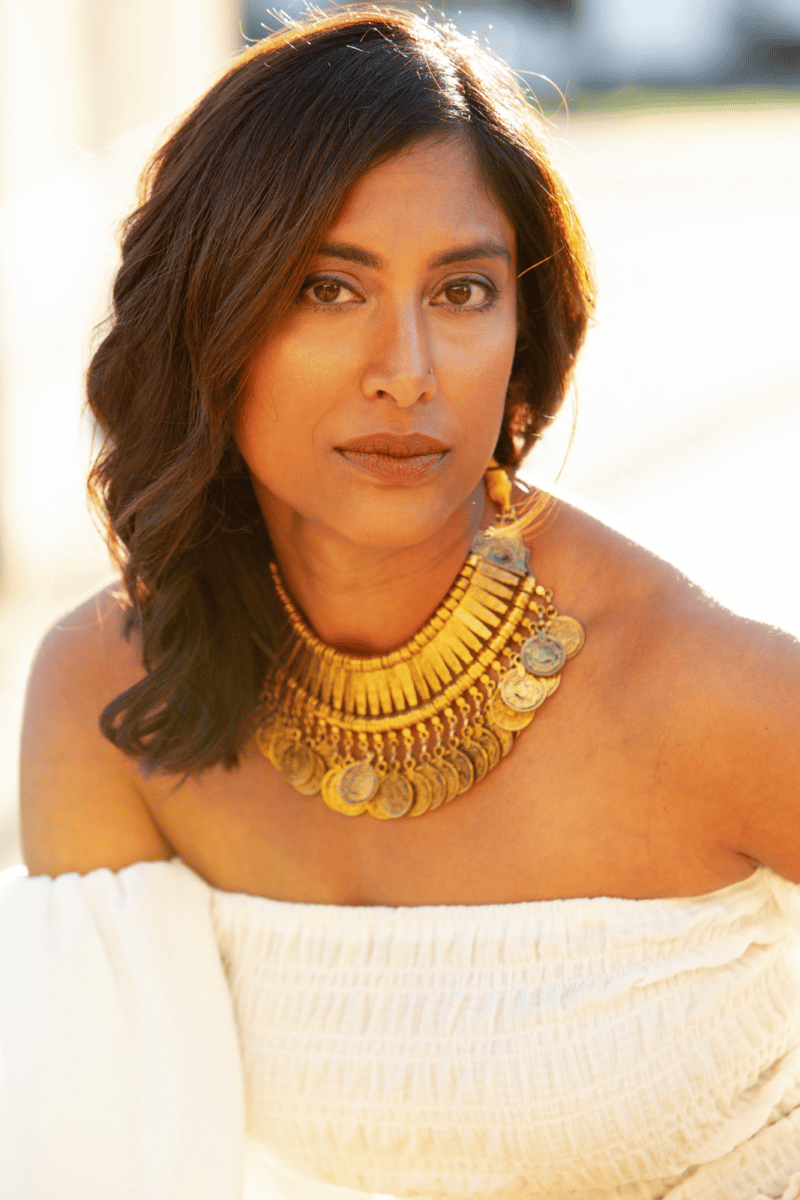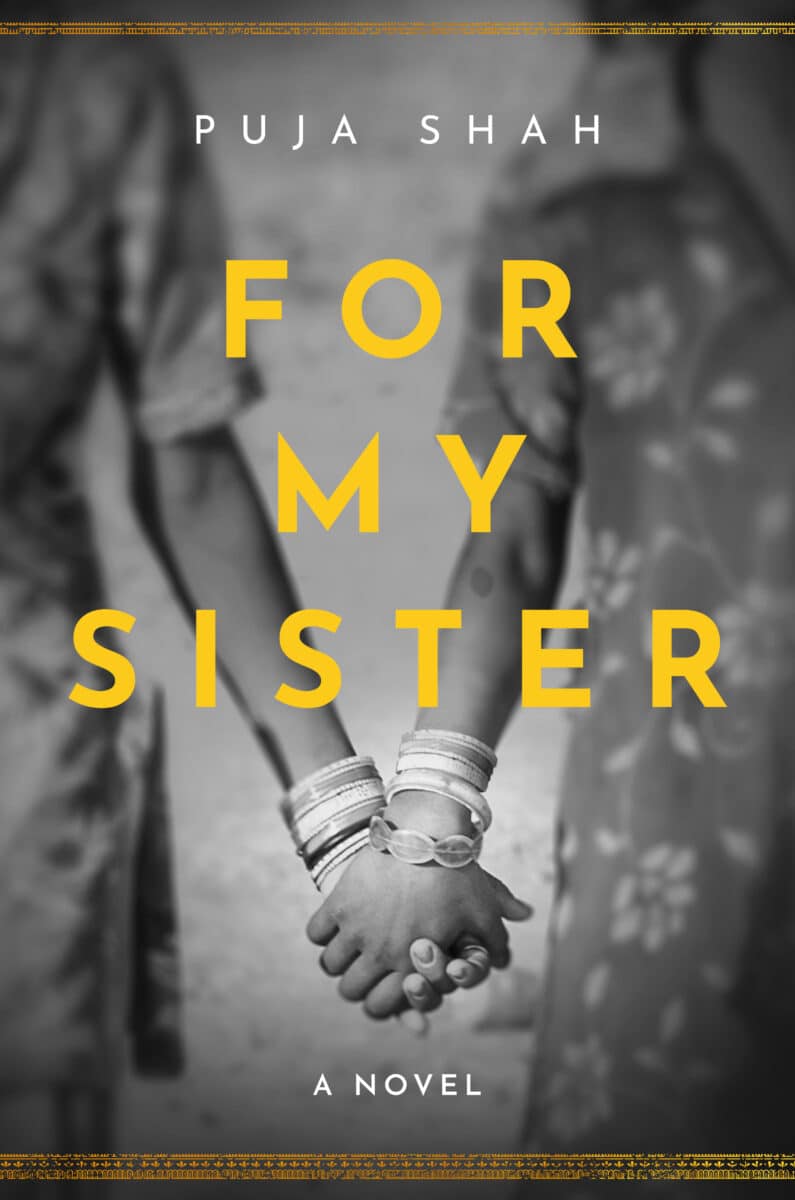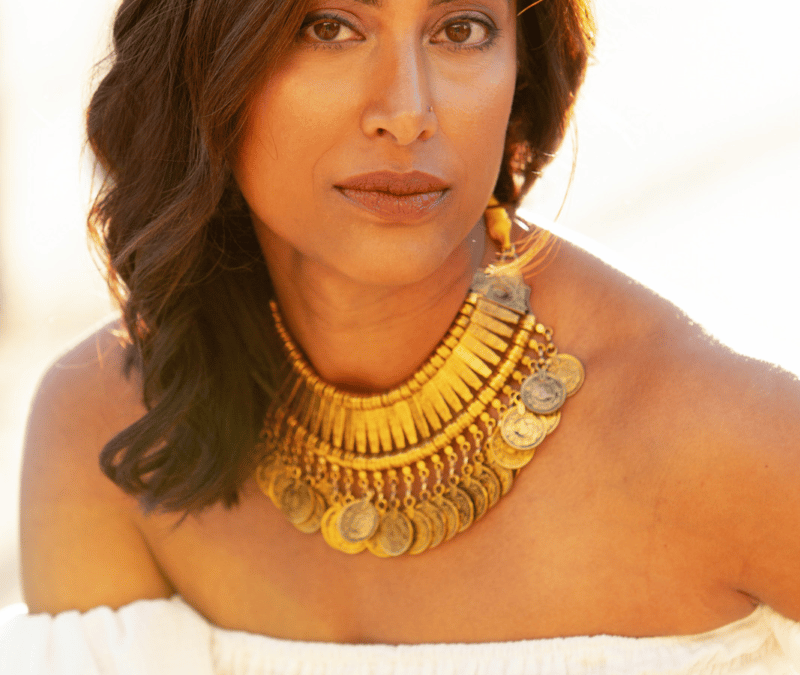
Puja Shah is a visionary poet who shares her voice through written and spoken word, guided meditations, and teaching. Born in Queens, New York, to immigrant parents, she defied teachers who questioned her English skills by winning countless poetry and short story awards in her youth. As an avid reader, she spent her teen years exploring New York City for poetry slams and book readings. The blend of East and West has always fascinated her, so she holds a graduate degree in dental medicine from Tufts University as well as over a dozen trainings in various forms of yoga, meditation, and ancient wisdom. For My Sister is her first novel. More information at www.formysisterbook.com.

Amla and Asya are sixteen-year-old twins living with their family in a small village outside of Mumbai. While they look alike, they are very different. Asya is known for her quiet grace and understanding, whereas Amla questions authority and breaks rules.
Their lives change overnight when their mother becomes ill with cancer and their father succumbs to the massive financial strain of her care in Mumbai and eventually abandons his children. To the twins’ dismay, their grandparents arrange their marriages to older men. When they form a plan and run away to join their mother in the hope for a new life, the girls discover that the world is not what they thought.
After trusting the wrong people, a long train ride brings them to the dark streets of India’s largest sex market where they are sold to a ruthless woman. Their only security is each other . . . until they are separated. Though they each discover ways to cope through poetry, art, and romance, they long for the other half of themselves. Will their lives ever intertwine again?
1. Your new book, For My Sister, comes out this October. What inspired you to write it?
While the novel is a work of fiction, its themes and sources of inspiration are real. The narrative draws on my own experiences of growing up in Indian culture, and my philanthropy work with underserved women and children around the world, to paint an authentic picture of what human trafficking victims in India go through, and the coping mechanisms they adopt to retain their humanity, their spirit, and to survive long enough for a chance at freedom. It is also based in the bond of twin sisters, echoing the longstanding bonds I share with my own siblings, especially my sister.
2. All writers approach their stories differently. What’s your process?
Consistency is key and find a time that works for you. For me, the mornings after my kids were dropped off at school and late nights after my whole house was asleep was when I spent time writing this novel the most.
I like to write in flow, but many of the chapters of this novel were not all written in order. After I completed the whole manuscript on my laptop, I printed it out and edited directly on paper by separating chapters to lay out in front of me and adding sticky notes to places.
I also thrive in retreat settings, so for this book, I took a few days away where I wrote and edited and often find getting away and having time to myself helps to remove any writer’s block and gets my creativity flowing again. As a mother, I can’t take trips that often, so my favorite self-care is lighting candles and having an evening bath.
3. Where and when do you feel most inspired?
A little inspiration hack is I keep a pen and pad (or iPhone notes) with me in the bathroom for after my shower. Some of my best ideas happen when I shower! I am also inspired to write after I have had time to meditate or pause. Being in nature inspires me so sometimes taking a walk on the beach helps me find calm, focus, and get out the words my heart wants to write.
4. How did you come up with the title of your book?
I did not have a title initially, and just had written “Amla and Asya” as a placeholder. On the day I wrote down the part when Asya says she has to be strong after her mother gets sick, “I have to be strong…for my sister.” I remember looking at the page afterwards and knew that was my title.
5. Who are some of your favorite writers or creators?
There are too many! To name just some of my favorite writers that have inspired and influenced me: Maya Angelou, Junot Diaz, Jhumpa Lahiri, Margaret Atwood, Rohinton Mistry, Lisa See and Gregory Roberts. I am also a photography fan. I studied it briefly in college and love taking photos myself. Photographers whose work I love include Peter Lik, Steve McCurry, and Lisa Kristine.
6. How long have you been writing or when did you start?
The first poem I wrote that I remember (and that even won a regional award) was in 3rd grade, I was 8 years old. After that, I wrote often in any free time I had, filling notebooks and pads with poems and short stories.
7. What, to you, are the most important elements of good writing?
I believe when you can provide a deep point of view, you can evoke emotion and people can feel your character rather than simply watch your character, which is always good writing (the classic show, don’t tell). I also found it helpful that I knew my ending and to me, a good story always has to have a good ending.
8. What part of the book was the most fun to write?
Writing the New York City chapters brought me right back to it. Between the scenes of Times Square, a small bookstore in Harlem, to describing the temple in Queens or drive to Long Island, I enjoyed it all. Even if I no longer live there, those were pieces of me as a New Yorker and it felt so fun to write them down on paper to bring them alive.

